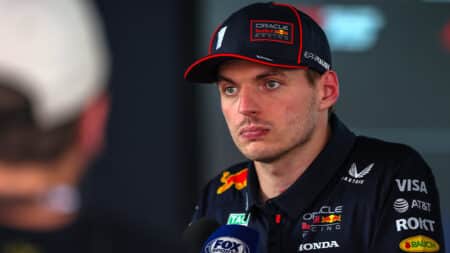
MPH: Verstappen’s self-destructive rage has put him on brink of F1 race ban
Max Verstappen is just one offence away from an F1 race ban and a pattern has emerged in the way he’s racked up penalty points, says Mark Hughes
The scale of Red Bull’s advantage this season had Max Verstappen acknowledging in Jeddah that the world championship is unlikely to go to anyone other than himself or team-mate Sergio Pérez. Having finished second to Pérez in the race, essentially because he had to start 14 places behind him after a driveshaft failure in qualifying, Max was airing his dissatisfaction with the reliability, exactly because it could influence the title outcome.
Could Sergio Pérez, good driver though he is, seriously be considered Verstappen’s title rival? The chances of him outperforming Verstappen over a season have to be considered remote. But that’s an ‘outside looking in’ perspective. There is absolutely no reason why Pérez, as a fully competitive F1 driver, should even begin to think like that – and he’s almost certainly not.
From his words coming into the season, his manner and his performance in the two events to date he’s clearly a man on a mission. He’s much happier with the balance of this car than that of the latter half of last season. Driving it feels more intuitive to him and he is clearly not intending this to be a third year as Red Bull’s support driver.
So he grabbed the opportunity provided by Verstappen’s mechanical mishap and wasn’t about to let it go – not even when a safety car had wiped much of Verstappen’s deficit to him, putting him just 5sec behind with 25 laps still to go.
On previous form Verstappen would easily obliterate such a gap. Especially on a track where the robust hard tyre allowed him to push hard, where the pace wouldn’t be defined by tyre temperatures but by the ability to drive all-out at high speed between the walls. But not on this day. Max was giving it everything but Sergio was only a smidgeon slower. It took 12 laps of flat-out running for Max to reduce a 5.4sec gap to 4.3sec. That wasn’t on schedule to get him on Pérez’s tail before the end.
But as they pushed on, so gremlins threatened. Verstappen began to hear a high-pitched noise from the rear of the car at speed, just like the day before, and its balance off-throttle felt strange. He reported it, the team checked the data but could see nothing. Then Pérez began feeling vibrations. This is all with the backdrop of the cars having only just finished in Bahrain two weeks earlier. There’s something delicate in the transmission.
“In the team, everyone is happy but I’m not happy. I’m not here to be second”
So began the game of a team trying to ensure a 1-2 finish by calling off the fight. But to do that requires the guy behind to back off first. Gianpiero Lambiase, Verstappen’s race engineer, got a feeling of deja vu. He’d been imploring Verstappen to back off even in Bahrain when he had the race already won and was under no threat. Even then, Verstappen had ignored the request for many laps. Now the same request, but with far more motivation for Max to ignore it. “Thirty-three-zero please,” Lambiase requested as Max lapped in 1min 32.3sec. “Confirm 33.0, Max.” Radio silence. Fastest lap of the race so far at 32.2sec. “33.0 please Max.” A lap later Pérez went yet faster, 1min 32.1sec.
Hugh Bird, Pérez’s race engineer, was making the same request. “What times is Max doing?” Checo demanded. Max had just done a 32.6sec. “So why are you asking me to do 33.0sec?” Pérez was quite logically asking why they were pushing and risking a non-finish. What the team couldn’t say was “because Max is ignoring the request”.
These are competitive people and racing in the full knowledge that they are competing with each other for the sport’s biggest prize. With six laps to go Max had done some calculations in his head and realised he wasn’t going to catch Pérez and finally he backed off to the requested lap time. He finally broke the radio silence by asking what the fastest lap of the race was. “We’re not concerned about that,” replied Lambiase. “Yeah, but I am,” said Max. Taking it from Pérez would be a two-point swing between them. He harvested his electrical power for his last lap assault – and duly delivered it. The one point he took for it is the one by which he was leading the championship.
Outsiders took this as disrespectful. It’s nothing of the sort. It is simply intense competitive dynamics, and there is always a fault line where the driver’s interests diverge from those of the team.
“I recovered to second,” he said, “which is good. And of course in general, the whole feeling in the team, everyone is happy but personally, I’m not happy. Because I’m not here to be second, especially when you are working very hard also back at the factory to make sure that you arrive here in a good state, and basically making sure that everything is spot on. And then yeah, you have to do a recovery race, which I like – I mean, I don’t mind doing it – but when you’re fighting for a championship and especially, you know, when it looks like it’s just between two cars, we have to make sure that also the two cars are reliable.”
It’s not just the phenomenal talent, it’s the mental intensity. How does Pérez even begin to fight that? Well, he’d just done a fine job of resistance. But that’s just one race.
Since he began covering grand prix racing in 2000, Mark Hughes has forged a reputation as the finest Formula 1 analyst of his generation
Follow Mark on Twitter @SportmphMark

Max Verstappen is just one offence away from an F1 race ban and a pattern has emerged in the way he’s racked up penalty points, says Mark Hughes
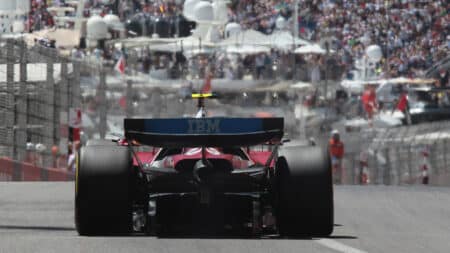
As F1 enters the final year of its ground effect era, teams are discovering that success now depends as much on intuition and adaptability as on traditional engineering precision, as Mark Hughes explains

Lando Norris realised his dream of winning the Monaco Grand Prix in 2025, as the new mandatory two-stop rule brought creative strategies in the midfield, writes Mark Hughes
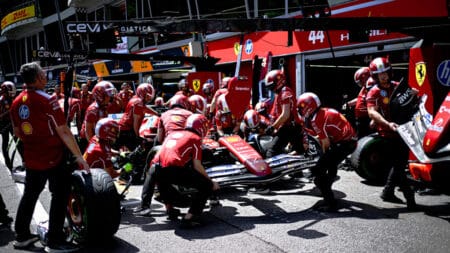
This year’s Monaco Grand Prix brings the prospect of unprecedented chaos and intrigue, as the new two-stop rule throws strategy – and the race outcome – wide open. Mark Hughes explains
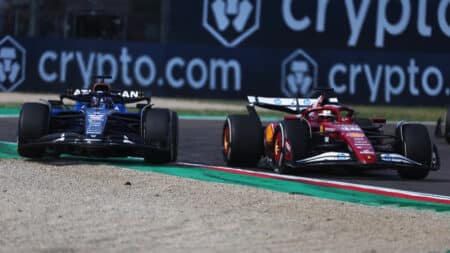
This year’s Emilia-Romagna GP was probably Imola’s last F1 race, but the circuit was already pushing its luck in an age of safer and fairer racing — that lacks the rawness of the past, says Mark Hughes

A brilliant performance in a pacy Red Bull — plus some lucky timing — pulled Max Verstappen clear of the pack in the 2025 Emilia-Romagna Grand Prix, which looks set to mark F1’s final race at Imola
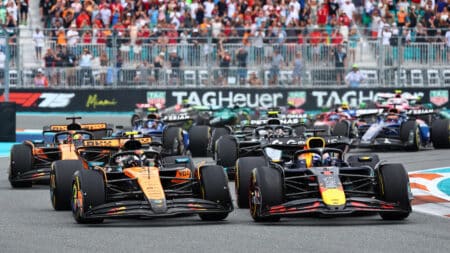
Six races into the Formula 1 season, McLaren has taken an early lead as Max Verstappen has kept Red Bull competitive and Mercedes and Ferrari try to gain ground. Mark Hughes analyses the field’s form in the first quarter of 2025

Max Verstappen preserved his lead at the start of the Miami GP by knowing the letter of the F1 law – probably costing Lando Norris the win

McLaren crushed the opposition in the Miami Grand Prix, with Piastri taking his third straight win in a race that looked like Norris’s to lose. Mark Hughes answers the main questions from the sixth round of the 2025 season

One year ago McLaren scored a shock Miami win, but it proved a changing of the F1 guard – can Red Bull do the same to fight back in Florida this weekend, asks Mark Hughes

Fears that one engine manufacturer will dominate F1 from 2026 are likely to see strugglers allowed to catch up. If power units are to be artificially equalised, how much of a technical competition will it be? asks Mark Hughes
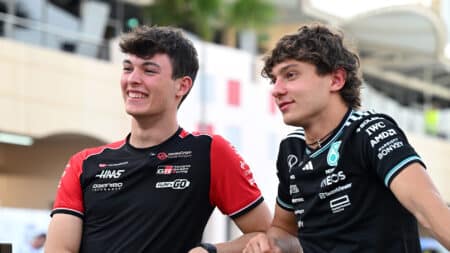
When does a rookie have the edge over an F1 world champion? Perhaps in Jeddah, says Mark Hughes, where the unsettling effect of a softer tyre compound is less likely to faze younger drivers than the likes of Carlos Sainz and Lewis Hamilton